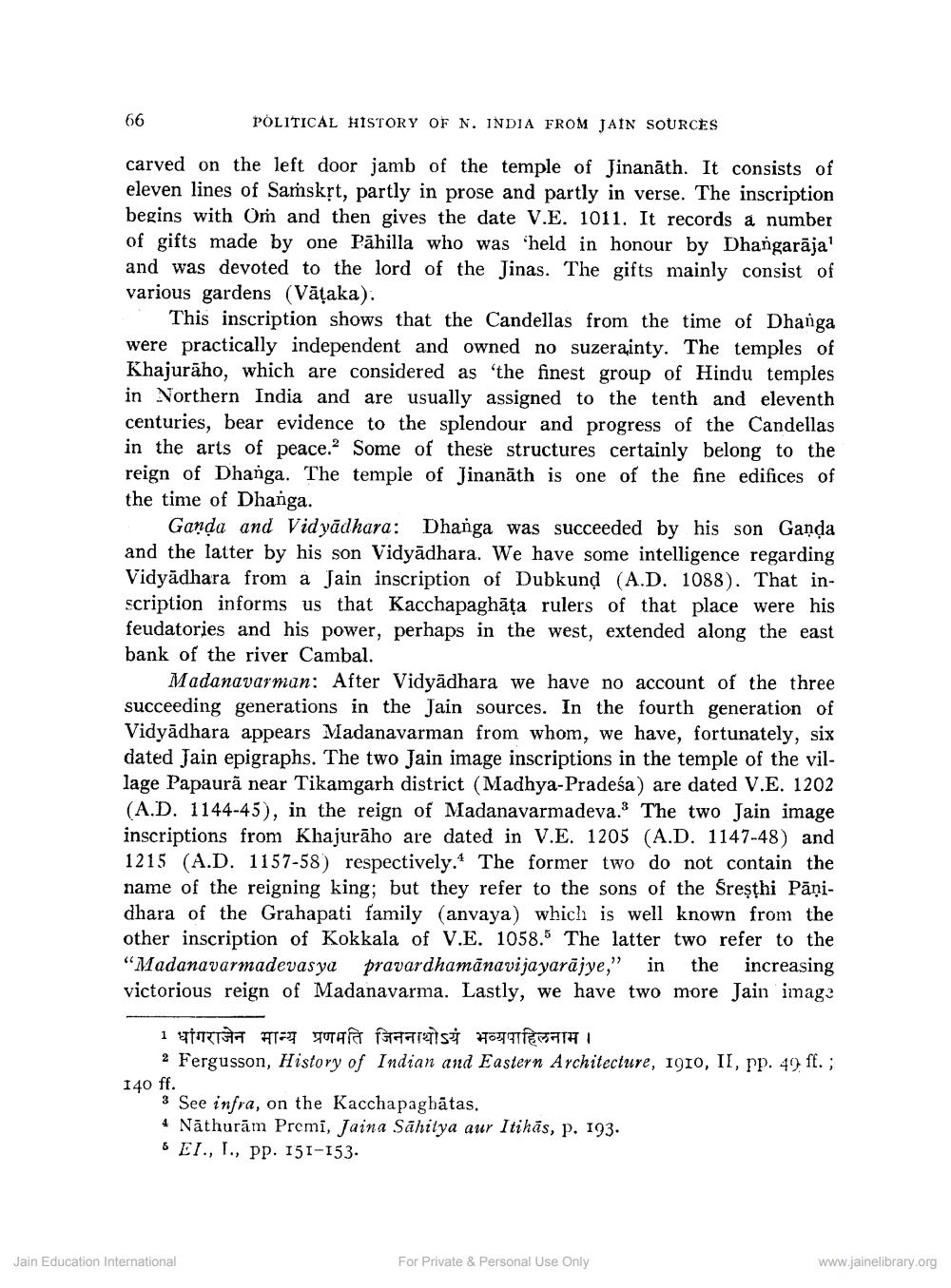________________
POLITICAL HISTORY OF N. INDIA FROM JAIN SOURCES
carved on the left door jamb of the temple of Jinanäth. It consists of eleven lines of Samskṛt, partly in prose and partly in verse. The inscription begins with Om and then gives the date V.E. 1011. It records a number of gifts made by one Pähilla who was held in honour by Dhangaraja' and was devoted to the lord of the Jinas. The gifts mainly consist of various gardens (Vataka).
66
This inscription shows that the Candellas from the time of Dhanga were practically independent and owned no suzerainty. The temples of Khajuraho, which are considered as 'the finest group of Hindu temples. in Northern India and are usually assigned to the tenth and eleventh centuries, bear evidence to the splendour and progress of the Candellas in the arts of peace." Some of these structures certainly belong to the reign of Dhanga. The temple of Jinanath is one of the fine edifices of the time of Dhanga.
Ganda and Vidyadhara: Dhanga was succeeded by his son Ganda and the latter by his son Vidyadhara. We have some intelligence regarding Vidyadhara from a Jain inscription of Dubkund (A.D. 1088). That inscription informs us that Kacchapaghāta rulers of that place were his feudatories and his power, perhaps in the west, extended along the east bank of the river Cambal.
Madanavarman: After Vidyadhara we have no account of the three. succeeding generations in the Jain sources. In the fourth generation of Vidyadhara appears Madanavarman from whom, we have, fortunately, six dated Jain epigraphs. The two Jain image inscriptions in the temple of the village Papaură near Tikamgarh district (Madhya-Pradeśa) are dated V.E. 1202 (A.D. 1144-45), in the reign of Madanavarmadeva." The two Jain image inscriptions from Khajuraho are dated in V.E. 1205 (A.D. 1147-48) and 1215 (A.D. 1157-58) respectively. The former two do not contain the name of the reigning king; but they refer to the sons of the Sresthi Pāņidhara of the Grahapati family (anvaya) which is well known from the other inscription of Kokkala of V.E. 1058. The latter two refer to the "Madanavarmadevasya pravardhamānavijayarājye," in in the increasing victorious reign of Madanavarma. Lastly, we have two more Jain image
1 भांगराजेन मान्य प्रणमति जिननाथोऽयं भव्यपाहिलनाम ।
Fergusson, History of Indian and Eastern Architecture, 1910, II, pp. 49 ff.;
140 ff.
3 See infra, on the Kacchapaghatas,
4 Nathurām Premi, Jaina Sahitya aur Itihas, p. 193.
EI., I., pp. 151-153.
Jain Education International
For Private & Personal Use Only
www.jainelibrary.org




